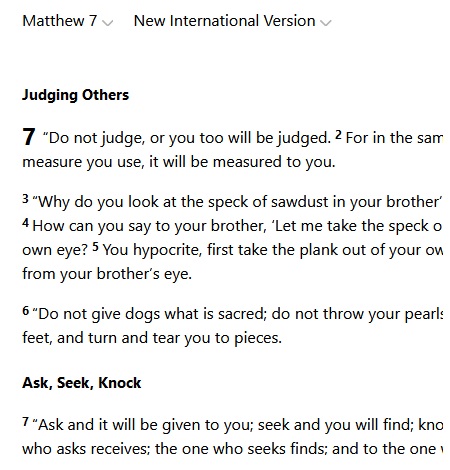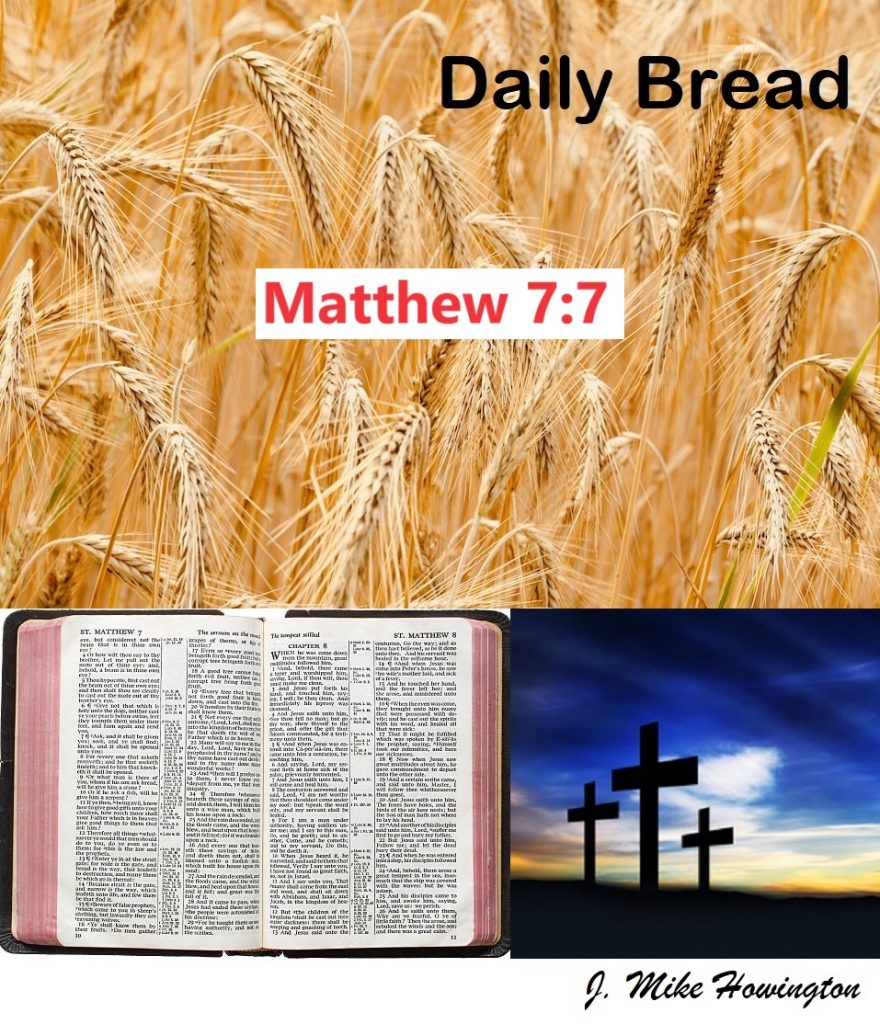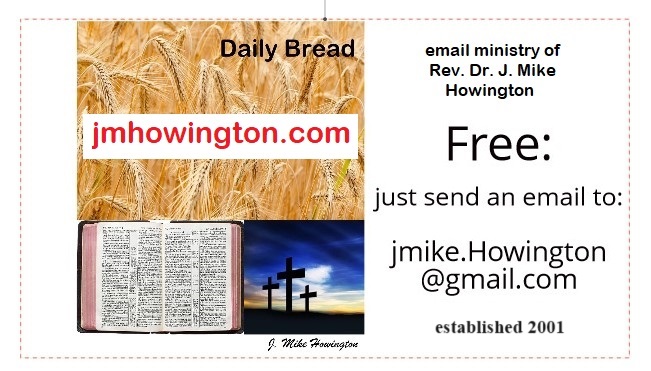Getting into the truth is God’s desire for us all. God “desires all men to be saved and to come to the knowledge of the truth.” (1 Timothy 2:4)
God’s Word equips us to grow in our faith and “speaking the truth in love, we are to grow up in all aspects into Him who is the head, even Christ.” (Ephesians 4:15)
Pursuing the truth through the study of Scripture equips us to do “every good work” serving the Lord. (2 Timothy 3:16, 17)
Beginning the Pursuit of the Truth and Growing FaithPursuing the truth and nurturing your faith requires a conscious decision, planning, and scheduling. You must set aside some regular time in your day to get into God’s word. Mastering the divine truth requires a long-term commitment to the little-by-little study of the Holy Bible.
That is not to say that you have to start devoting an hour every day to reading Scripture. You can start by devoting just 15 minutes a day at a regular, scheduled time. Keeping your set apart time will build a habit that might grow to an hour or more.
Shorter, consistent daily times will help build your habit. But aim for at least 30 minutes. Keeping track of your study time will ease the transition to longer studies.
Even when times are tight, or you just don’t feel like it, check in by recording the amount of time you spent, or skipped the study. Skipping a time is detrimental to forming the habit, but recording the skip helps to build the habit.
Study Using Good ToolsYou should not begin your study with a translation that confuses you or leads you to constantly go off on a tangent to research the meaning of the scriptural phrase. If you’re comfortable with the King James Version of the Bible, then by all means use it.
There are many translations of English study Bibles. My favorite, because it is the closest to a literal translation, is the NASB (New American Standard Bible). But I make my notes in my own Bible which I call the Transdenominational Study Bible (TDSB). The TDSB has the Scripture in columns quoting from three to four popular translations. In the Old Testament, the first column gives the NIV (New International Version), the second column holds the KJV (King James Version), the third column contains the JPS Bible (Jewish Publication Society Bible, which contains the English translations of the Tanakh, Torah, Nevi’im, and the Kethuvim) and the last column contains an English literal translation of the Hebrew Holy Scriptures. Such an arrangement is usually referred to as a parallel Bible. Where the TDSB differs from other parable Bibles is in the fact that my TDSB contains verse-by-verse notes commentaries and bibliographies, while other parable Bibles are not study versions and contain only Scripture.
In my TDSB the New Testament has only three columns of versions. The first column holds the NIV, the second the KJV, and the third holds an English literal translation from the Greek.

In my TDSB, I note the different interpretations and applications held by every denomination or sect. Although I make every effort to not judge the differences (Jesus is in charge of judging, not me), I do note my own opinion or, on multiple opposing views and I may indicate which I believe is most correct (correctness is usually the version closest to a literal translation).
You may not want to go into that much detail in the beginning because it requires vast amounts of concentration on small bits of Scriptural phrases. But beware that the commentary, or even the Bible version, that you’re studying will contain biases based on the church or denomination of source. That is a problem you might want to hold off tackling until after your faith grows to the point that it is Jesus, or God, that you worship and not necessarily your church.
You need to avoid bad hermeneutics that takes a verse or phrase out of context to fit an application. Or at least if you’re deciding that the application is what you feel compelled to believe, know that your faith is based on taking God’s Word out of context. Know also the penalties for adding to God’s Word, as the priests of Jesus’ time on earth had done, are severe and are given throughout the Old and New Testament.
But you cannot take all of Scripture in one chapter as one big block to study. You have to consider verses in their conceptual contexts.
So, how do you break the verses into such sections? Most likely the study Bible that you’re using has done that for you. It probably contains headings embedded in the scripture that tell you the context or setting of the following verses. If you’re using multiple versions, like I do, you may have to decide the context blocking yourself. I have chosen to use Mathew Henry’s commentary as a guide to the pattern of breaking the chapters into sections/verses/phrases and then making note of where I or some other commentarian notice the extraction out of context.


Yes, I have just admitted that the TDSB contains one other column not mentioned above. The extra column is more of a block of text below the columns. Each chapter of the TDSB has the verses blocked to sandwich those verses that Mathew Henry segregated into blocks. The TDSB, in both the Old and the New Testament, shows the columns of versions immediately followed by paragraphs quoted from Mathew Henry for those blocks. Then my notes, and then the next block of columns, etc.
If you’re considering the daunting task of studying more than one version of the Bible you may want to make use of the freely available Bibles to read online.
Notice that the TDSB is a red-letter edition. But that is another difference between the TDSB and other red-letter editions. Other red-letter versions highlight the actual words of Jesus Christ in the New Testament. But our God is Triune: Father God is the God the Son and He is God the Holy Spirit. Thus, the TDSB has red-lettering in both the New and the Old Testament wherever God, Jesus, or the Holy Spirit is quoted. (And yes, Jesus and the Holy Spirit appear hundreds of times in the Old Testament. Long ago I did a series of sermon on Jesus in the Old Testament and still today I am discovering Him in passages I didn’t recognize before. If you wish to chase down that tangent in your studies, send me an email at jmike.howington@gmail.com and I’ll reply with a starter list and the name of a good course-workbook guide.)
You Must Keep/Record Your Study NotesExactly how you keep those notes is up to you. You can write them in a notebook, in the margins of your study Bible, or in an electronic note-taking program.
I have found that the margins in Bibles do not have enough room for all the notes. You will need to take full explanations into your notes because you will be coming back to them later.
I have found that pen and paper are too confining for the notes because deletions and additions eventually make the journal pages lack the space for the notes.
That leaves electronic documentation. My major objection to manually written notes is that they require separate, or multiple separate, documents from the Bible verses being noted. But, most of the note-taking applications that can be loaded onto your computer or laptop, like Evernote, Notepad, or OneNote, also require separate documents/files.
That’s why I have chosen to put my notes into a word processor (MS WORD, to be exact). That way I can copy the Bible Version into my TDSB (which is WORD files, separate files for each Books chapter) and place the notes right in line with the applicable Scripture. Another benefit is the fact that copying the verses means I will be reading the scripture multiple times. Especially since the TDSB has eliminated the need to flip all around the Bible because whenever the notes reference a different Book/Chapter/Verse, I quote the reference immediately below the note.
Be sure that the word processor you use is loaded onto your computer so that you can do serious Bible study anywhere, or anytime, including when there is no wireless connection.
The Structure/Routine of Your Bible StudyThis topic, if expanded to give all the applicable Scripture, reasoning, advice, and commentary will fill a good-sized book.
Instead, I will tell you about the hermeneutics I employ in the TDSB. For Most of the Books in the Bible, in the TDSB, there is an introductory chapter labeled Chapter 00. In that introduction, I have included, for most books, the “Hermeneutics Employed By Rev. Dr. J. Mike Howington” (that’s me). That introductory section says:
Don’t try to speed through it. Take as much time on each and every verse as you need to understand it and know what God is trying to convey to you. Notice that your perception will be slightly different in the differing circumstances you find yourself. But God is faithful; He will not allow you to be tested beyond what you can bear (1 Corinthians 10:13).
The method above is slow, even though I now find myself involved in it for most of 30 hours each week. Several would-be publishers have voiced irritation when I tell them that I cannot stop the study to get the TDSB ready for publication and “I don’t think it will be completed in my lifetime.”
You can do this! Let the Holy Spirit guide you and direct you slowly and steadily and you will not only nurture your faith, but you will also reap a life-long, even eternal, benefit.
______________Affiliate link – SHOP: _______________
_This ad is for my favorite version of The Bible _
_____but click on it to go to the whole store______


NASB Comfort Print Thinline Bible, Red Letter Edition–bonded leather, burgundy (click here)
By Zondervan
The beloved 1995 Edition of the New American Standard Bible is now easier to read with Zondervan’s exclusive NASB Comfort Print® typeface. This edition of the NASB Thinline Bibles is available in a variety of sophisticated designs in a portable, easy-to-read format.
- The full text of the New American Standard Bible, 1995 Edition
- Exquisite, durable covers
- Less than one inch thick
- Double-column format
- Presentation page
- Two satin ribbon markers
- Words of Christ in red
- Exclusive Zondervan NASB Comfort Print 9 point type
Features:
____________________________________________
Consider the Daily Bread email message sent on 3/18/2024 which says,

Deuteronomy 4:29 – But from there you will seek the LORD your God, and you will find Him if you search for Him with all your heart and all your soul. (NASB)
Seek the Lord. Study God’s Word and nurture your faith. You can do this. Let the Holy Spirit guide you and direct your study slowly and steadily and you will not only nurture your faith, but you will also reap a life-long, even eternal, benefit.
To receive the Daily Bread email messages, free on Mon., Wed., and Fri., in your email inbox, just fill in the form below or send an email, and ask to be added, to jmikeh@jmhowington.com
Click Here to Scroll To Top of the Page

